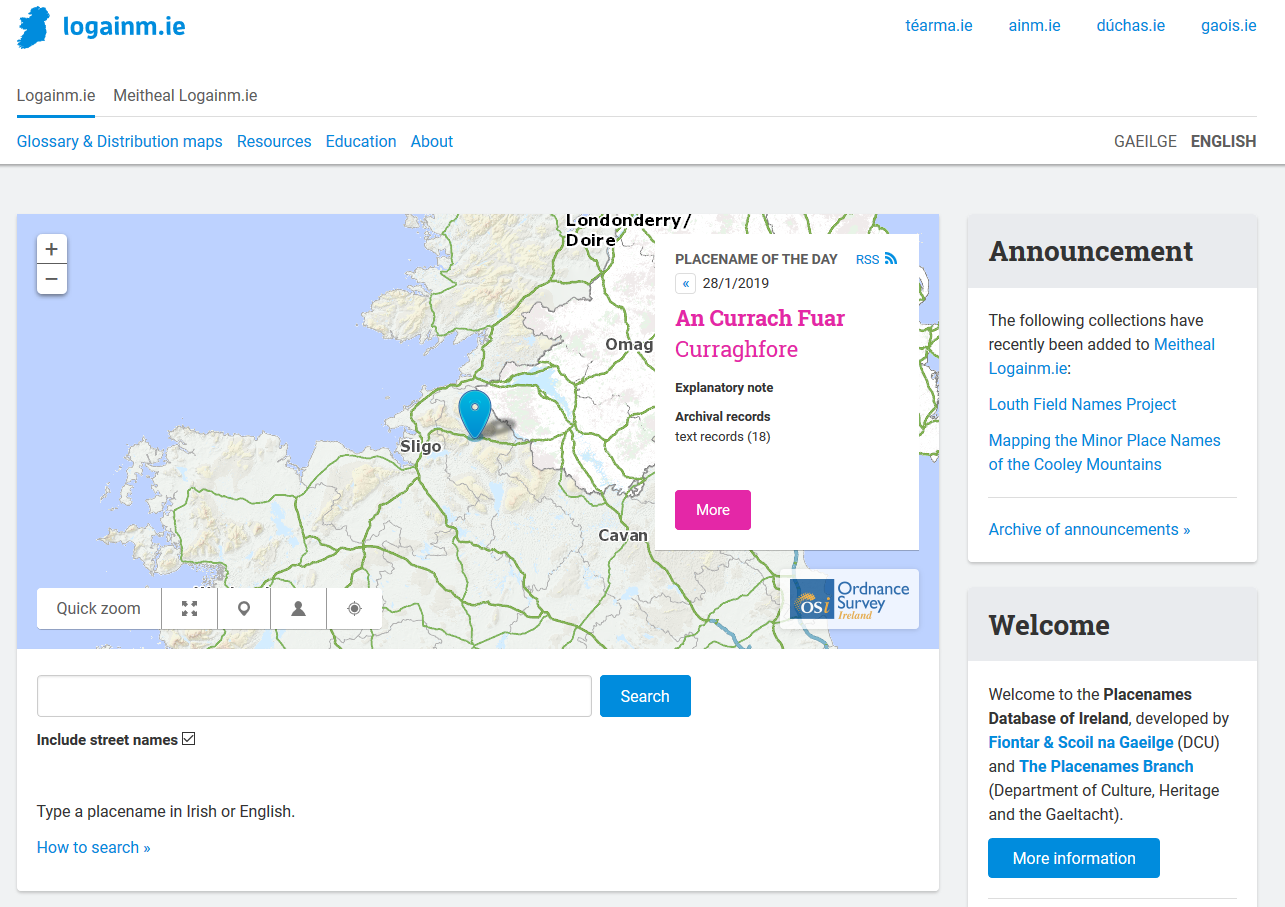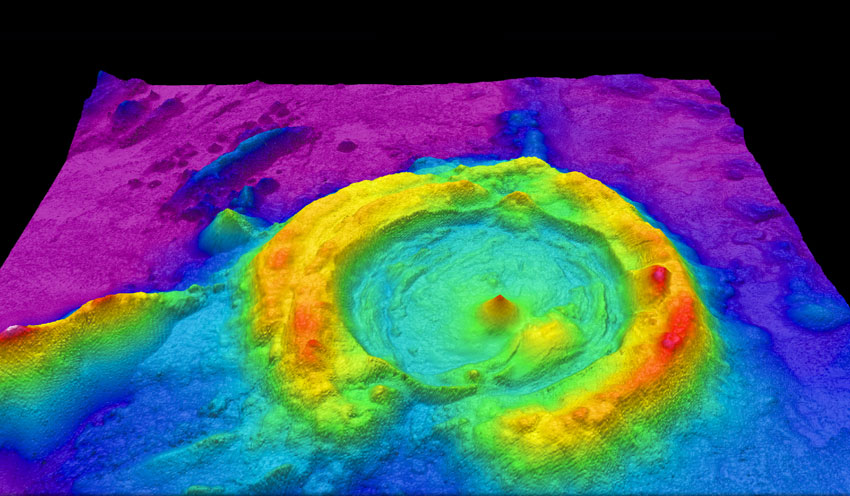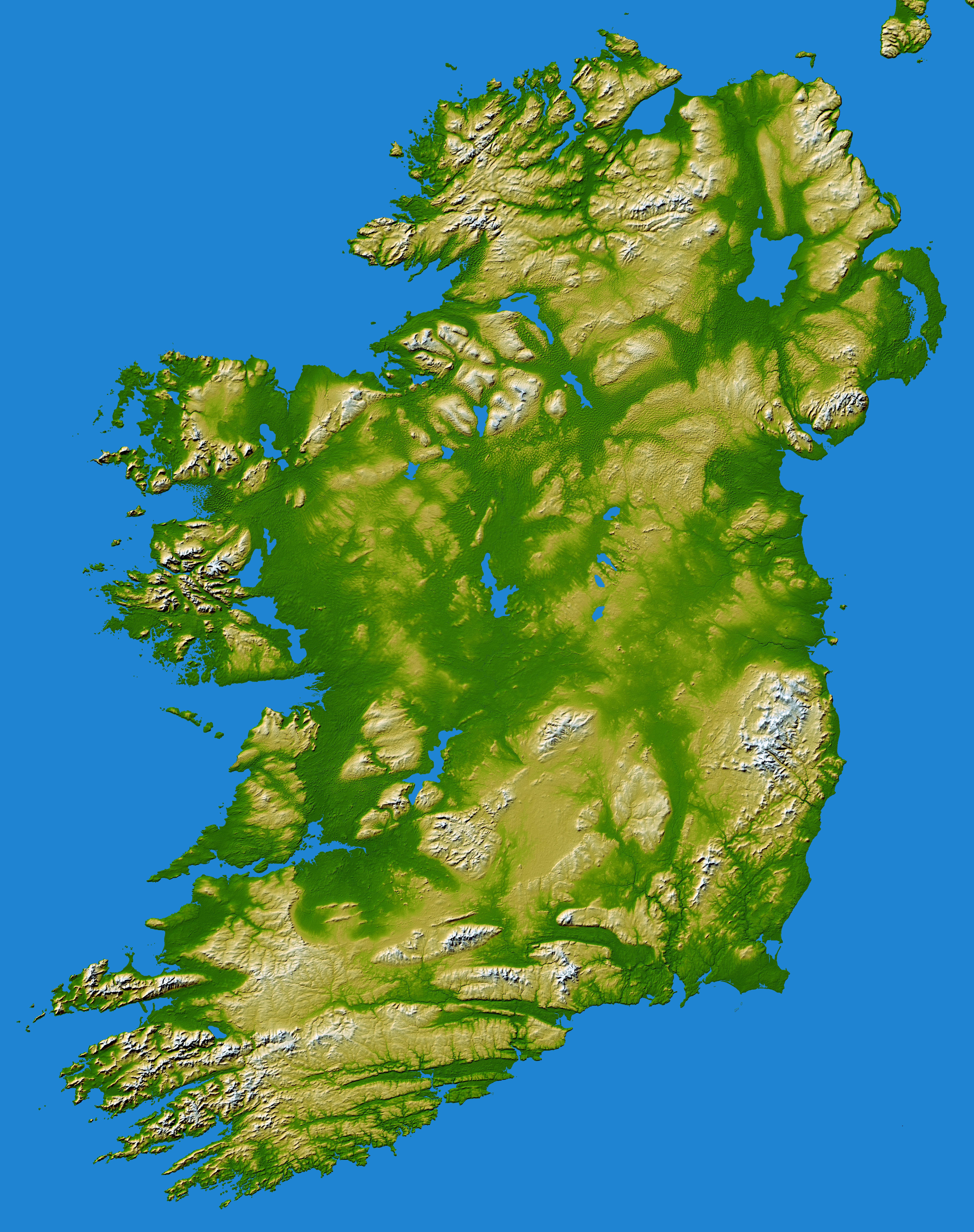|
Stumpa Dúloigh
Stumpa Dúloigh ( Irish for "stump of the black lake") also known as Maol, is the highest of the Dunkerron Mountains, part of the Mountains of the Iveragh Peninsula in County Kerry, Ireland. It has a height of and lies southwest of MacGillycuddy's Reeks. Name The mountain is named after a small lake called ''Loch an Dúloigh'' or Lough Duff. The mountain's alternative name ''Maol'' means "bare flat-topped hill". It is reflected in placenames on its slopes: ''Coimín na Maoile'', ''Loch na Maoile'' (Lough Namweela), and ''An Mhaol Ghlas'' (Moyleglass). Geography The mountain lies northwest of Knockaunanattin (569 m). West of Stumpa Dúloigh the Dunkerron range splits in two parts: the NE one leads to Broaghnabinnia (745 m) while the SE sub-range reaches Knocknabreeda (569 m). With an elevation The elevation of a geographic location is its height above or below a fixed reference point, most commonly a reference geoid, a mathematical model of the Earth's sea level a ... [...More Info...] [...Related Items...] OR: [Wikipedia] [Google] [Baidu] |
Irish Language
Irish (an Caighdeán Oifigiúil, Standard Irish: ), also known as Gaelic, is a Goidelic languages, Goidelic language of the Insular Celtic branch of the Celtic language family, which is a part of the Indo-European languages, Indo-European language family. Irish is indigenous language, indigenous to the Ireland, island of Ireland and was the population's first language until the 19th century, when English (language), English gradually became Linguistic imperialism, dominant, particularly in the last decades of the century. Irish is still spoken as a first language in a small number of areas of certain counties such as County Cork, Cork, County Donegal, Donegal, County Galway, Galway, and County Kerry, Kerry, as well as smaller areas of counties County Mayo, Mayo, County Meath, Meath, and County Waterford, Waterford. It is also spoken by a larger group of habitual but non-traditional speakers, mostly in urban areas where the majority are second language, second-language speakers. ... [...More Info...] [...Related Items...] OR: [Wikipedia] [Google] [Baidu] |
Placenames Database Of Ireland
The Placenames Database of Ireland ( ga, Bunachar Logainmneacha na hÉireann), also known as , is a database and archive of place names in Ireland. It was created by Fiontar, Dublin City University in collaboration with the Placenames Branch of the Department of Tourism, Culture, Arts, Gaeltacht, Sport and Media. The website is a public resource primarily aimed at journalists and translators, students and teachers, historians and researchers in genealogy. Placenames Commission and Placenames Branch The Placenames Commission ( ga, an Coimisiún Logainmneacha) was established by the Department of Finance in 1946 to advise Ordnance Survey Ireland and the government of what the Irish name of places should be. Although both the 1922 Constitution of the Irish Free State and the current constitution adopted in 1937 recognised Irish as the national language, the law in regard to placenames was carried over from the 19th-century UK statutes which established the Ordnance Survey and Gr ... [...More Info...] [...Related Items...] OR: [Wikipedia] [Google] [Baidu] |
Mountains Under 1000 Metres
A mountain is an elevated portion of the Earth's crust, generally with steep sides that show significant exposed bedrock. Although definitions vary, a mountain may differ from a plateau in having a limited summit area, and is usually higher than a hill, typically rising at least 300 metres (1,000 feet) above the surrounding land. A few mountains are isolated summits, but most occur in mountain ranges. Mountains are formed through tectonic forces, erosion, or volcanism, which act on time scales of up to tens of millions of years. Once mountain building ceases, mountains are slowly leveled through the action of weathering, through slumping and other forms of mass wasting, as well as through erosion by rivers and glaciers. High elevations on mountains produce colder climates than at sea level at similar latitude. These colder climates strongly affect the ecosystems of mountains: different elevations have different plants and animals. Because of the less hospitable terrain and ... [...More Info...] [...Related Items...] OR: [Wikipedia] [Google] [Baidu] |
The Black Valley
The Black Valley or Cummeenduff () is a remote valley at the southern end of the MacGillycuddy's Reeks mountain range in Kerry, situated south of the Gap of Dunloe and north of Moll's Gap; it is used as a southerly access into the Gap of Dunloe. The valley is usually accessed by driving to ''Moll's Gap'' and then continuing east on the R568 road until a small side-road (at , labelled "Gearhasallagh" after the townland), descends steeply north into the valley. The Black Valley is part of the Kerry Way, a walkers version of the Ring of Kerry beginning and ending in Killarney, and is also part of a 55–kilometre loop of the Killarney–Gap of Dunloe–Black Valley–Moll's Gap area, popular with cyclists. The Black Valley is also a southerly access route to the '' Head of the Gap'' in the Gap of Dunloe, and to '' Lord Brandon's Cottage''. The Black Valley is also noted for being one of the last places in mainland Ireland to be connected to the electricity and telephone networ ... [...More Info...] [...Related Items...] OR: [Wikipedia] [Google] [Baidu] |
Elevation
The elevation of a geographic location is its height above or below a fixed reference point, most commonly a reference geoid, a mathematical model of the Earth's sea level as an equipotential gravitational surface (see Geodetic datum § Vertical datum). The term ''elevation'' is mainly used when referring to points on the Earth's surface, while '' altitude'' or '' geopotential height'' is used for points above the surface, such as an aircraft in flight or a spacecraft in orbit, and '' depth'' is used for points below the surface. Elevation is not to be confused with the distance from the center of the Earth. Due to the equatorial bulge, the summits of Mount Everest and Chimborazo have, respectively, the largest elevation and the largest geocentric distance. Aviation In aviation the term elevation or aerodrome elevation is defined by the ICAO as the highest point of the landing area. It is often measured in feet and can be found in approach charts of the aerodrome ... [...More Info...] [...Related Items...] OR: [Wikipedia] [Google] [Baidu] |
Broaghnabinnia
Broaghnabinnia () is a summit of the ''Dunkerron Mountains'', part of the Mountains of the Iveragh Peninsula in County Kerry, Ireland. Geography The mountain lies northeast of Stumpa Dúloigh, the highest mountain of the Dunkerron range. With an elevation The elevation of a geographic location is its height above or below a fixed reference point, most commonly a reference geoid, a mathematical model of the Earth's sea level as an equipotential gravitational surface (see Geodetic datum § ... of 745 metres it is the 80th highest summit in Ireland. Access to the summit Broaghnabinnia summit can be accessed scrambling, and is steep on all sides. References External links Broaghnabinnia at MountainViews {{Mountains and hills of Munster Mountains and hills of County Kerry Mountains under 1000 metres Marilyns of Ireland Hewitts of Ireland ... [...More Info...] [...Related Items...] OR: [Wikipedia] [Google] [Baidu] |
MacGillycuddy's Reeks
, photo=MacGuillycuddy's Reeks.jpg , photo_caption= , country=Ireland , country1= , location = County Kerry , region = Munster , region_type = Provinces of Ireland , parent= , border= , length_km=19 , length_orientation=East–West , width_km= , width_orientation= , highest=Carrauntoohil , elevation_m=1038.6 , coordinates = , translation = the black stacks , language = Irish , range_coordinates = , geology= , period=Devonian , orogeny = , map=island of Ireland , map_caption=Location of the MacGillycuddy's Reeks , type= Purple sandstone & siltstone , topo = OSI ''Discovery'' 78 MacGillycuddy's Reeks () is a sandstone and siltstone mountain range in the Iveragh Peninsula in County Kerry, Ireland. Stretching , from the Gap of Dunloe in the east, to Glencar in the west, the Reeks is Ireland's highest mountain range, and includes most of the highest peaks and sharpest ridges in Ireland, and the only peaks on the island over in height. Near th ... [...More Info...] [...Related Items...] OR: [Wikipedia] [Google] [Baidu] |
MountainViews
In these lists of mountains in Ireland, those within Northern Ireland, or on the Republic of Ireland – United Kingdom border, are marked with an asterisk, while the rest are within the Republic of Ireland. Where mountains are ranked by height, the definition of the topographical prominence used to classify the mountain (e.g. the change in elevation required between neighbouring mountains), is noted. In British definitions, a height of is required for a mountain, whereas in Ireland, a lower threshold of is sometimes advocated. The lowest minimum prominence threshold of any definition of an Irish mountain is (e.g. the Vandeleur-Lynam), however most definitions, including the International Climbing and Mountaineering Federation (UIAA) criteria, do not consider prominences below as being mountains (e.g. must at least be an Arderin or a Hewitt). Many British definitions consider a peak with a prominence below , as being a ''top'', and not a mountain (e.g. must be a Marilyn). ... [...More Info...] [...Related Items...] OR: [Wikipedia] [Google] [Baidu] |






_-_geograph.org.uk_-_1434579.jpg)
